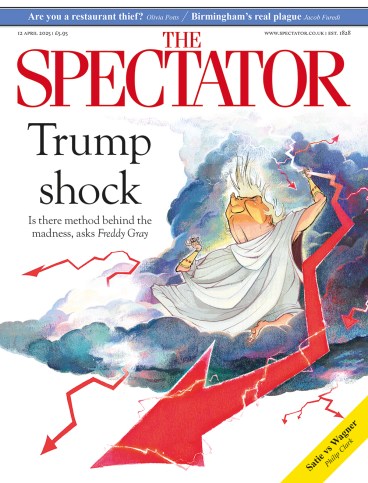
Everyone has their own William Blake and each age finds something new in the ocean of his work: revolutionary Blake, Christian Blake, humanist Blake, Jungian Blake, Freudian Blake, free-love Blake, hippy Blake, occult Blake, eco-Blake. The only time that missed out was his own – then he was mad, delusional and ignored Blake.
Philip Hoare brings the fizz of his own sensibility to bear on the work of a man whose progeny of artistic spin-offs multiply with each passing generation. The result is a book that is neither Blake biography nor critical analysis nor legacy-tracing nor personal odyssey but a capacious mixing of them all. As the author of Leviathan or, The Whale, and Albert and the Whale and the film Hunting for Moby-Dick, Hoare begins by giving us whale Blake.
London in the late 18th century, when Blake was a young man, was a ‘whaling port’. Vast quantities of blubber and whale flesh were landed on the quays of Rotherhithe. Stray cetaceans which swam into the Thames estuary were instantly harvested. The streets were illuminated by whale oil, whale bones had multiple uses and in Blake’s own neighbourhood were two spermaceti processing plants. The slaughter industry was at its height.
Whales in Blake’s work are not literally portrayed – nothing is. Hoare explores how they were refined in his imagination, transformed from images of greed into something more nuanced. The whale is ‘both good and evil… an unknowable philosophical quandary to challenge humans who already believe that they rule uniquely’. Their size and the limitless context of their marine habitat help them to become a vessel for all that we do not know; for those things that are themselves without limit. Hoare prods at Blake’s whales to reveal their enigmatic meanings, as well as their provenance in John Milton and Thomas Hobbes and St Brendan. He concludes the book with the redemptive idea that sits in the title – they are also ‘Sea Monsters of Love’.
In between, he takes us on a joyful and dizzying romp through the stories of those who came under Blake’s posthumous spell. Each of Hoare’s subjects is affected with a certain wildness, a loosening of societal norms that makes for expressive beauty and eccentricity, giving the author a host of colourful and hyper-connected anecdotes. In doing so, they make him a part of the very tradition he is recording, his own work here reaching ecstatic heights, his prose filled with moments of sudden clarity, his life and passions glimpsed.
Blake’s spirit would haunt W.B. Yeats more than any other poet
It took a few decades from Blake’s death in 1827 for his visionary influence to take hold. In the 1860s, the gathering of his written work was undertaken by the brothers Dante Gabriel and William Michael Rossetti (for whom Blake was a ‘pre-Pre-Raphaelite’) and also Anne Gilchrist, the widow of Blake’s first biographer. They altered Blake’s lines to suit their own taste. Gilchrist then moved to Philadelphia after falling in love with the work of Walt Whitman, whose tomb was later based on an etching of Blake’s.
A couple of decades passed and the baton was picked up by W.B. Yeats. ‘Blake’s spirit,’ says Hoare, ‘would haunt Yeats more than any other poet.’ With Edwin John Ellis, Yeats produced a three-volume edition of Blake’s work in 1893, in which – alongside a close study of Blake’s mystical ‘system’ – was the disputed claim that Blake was Irish. The actual genealogy mattered perhaps less to Yeats than Blake’s affinity with the Gaelic bardic tradition which was then stirring the energies of Irish nationalism. Yeats told James Joyce to read Blake’s work, and Joyce – ‘in a daze of revelation’ – found in it both literary and ethnic kinship. ‘Whether or not his fiery genius had its genetic origins in Ireland, it was evident enough to Yeats and Joyce.’ Blake freed them: he ‘allowed them to do what they did’.
The Blake bandwagon gathered pace in the 20th century, scooping up painters, poets and other wandering souls. T.E. Lawrence declared himself a ‘disciple’, reading Blake near the Euphrates in a ‘magnificent cloak of gold and silver thread’. Graham Sutherland attributed his ‘blasted landscapes’ to Blake. Denton Welch said Blake made him aware of ‘what I am for’. Nancy Cunard, Iris Murdoch, Paul Nash and Francis Bacon were all emboldened by Blake. The young Patti Smith and Robert Mapplethorpe read Blake in bed, convinced that such vitality meant he was American.
Sometimes the names and connections in Hoare’s narrative tumble out a little too fast, and the digressions can become tenuous, but he is never less than engaging. With his accounts of others come snapshots of the author himself – the young London clubber, the swimmer in the Solent and in the sea off New England. He confesses at the outset that long ago he gave himself up to the sea – ‘leaving me attached to no one and nothing else… spoilt for the ordinariness of life’.
As a teenager, Hoare went to the cinema every day for a week to watch Nicholas Roeg’s The Man Who Fell to Earth, secretly taping its soundtrack, mesmerised by David Bowie’s performance. For Hoare, Blake and Bowie sit at the top of his personal pantheon, and of Blake he says: ‘I admit, here and now, I have never felt such solace from an artist.’
Blake famously resists being squeezed into a movement, either as painter or poet. His work stands apart from the assemblage of cultural eras beloved by critics and art historians. He transmits his effects directly to individuals. Geoffrey Keynes, who produced a complete and unaltered edition of Blake’s writing in 1927, identified something unusual in his legacy: ‘Other artists may be great, but their excitement was cool and impersonal; only Blake retained the power to stimulate into our own time.’

Event
The Book Club Live: An evening with Max Hastings
In Jerusalem, Blake himself writes that ‘every Age renews its power from these Works’, and Hoare picks up on the ageless appeal: ‘Blake travels with us, in an enactment of something that has already been and is yet to come.’ He is the latest in a long line of Blakeans which will continue in ways that are now impossible to predict. His book – wonderfully crazy in its darting movement, its flashing asides, the flamboyance of its cast – stands out for its vigour, immense research and the rawness of the author’s responses.
In the final feverish pages, Hoare tries to track down artefacts and sites, including the places in London where Blake was born and died, neither of which exists. ‘Where would his visions go now?… Would the Ancient of Days hover over the fried chicken shop? The Lamb of God become a kebab?’ In the Fitzwilliam Museum, he looks through Blake’s spectacles: ‘Like being in his brain… I shake inside.’ In the British Library, he places Blake’s notebook on foam wedges: ‘A magical thing, the journal of a magician, containing all his spells… makes you want to sing.’
Hoare’s books are always works of profound immersion, but this oneseems to draw the author in even deeper. Blake has a way of doing that. Looking at the 1802 self-portrait, Hoare writes: ‘Those eyes take it all in. He’s an ageless spirit: hypnotic and irresistible… Blake was a one-man utopia, and it is hard not to love such a man.’








Comments